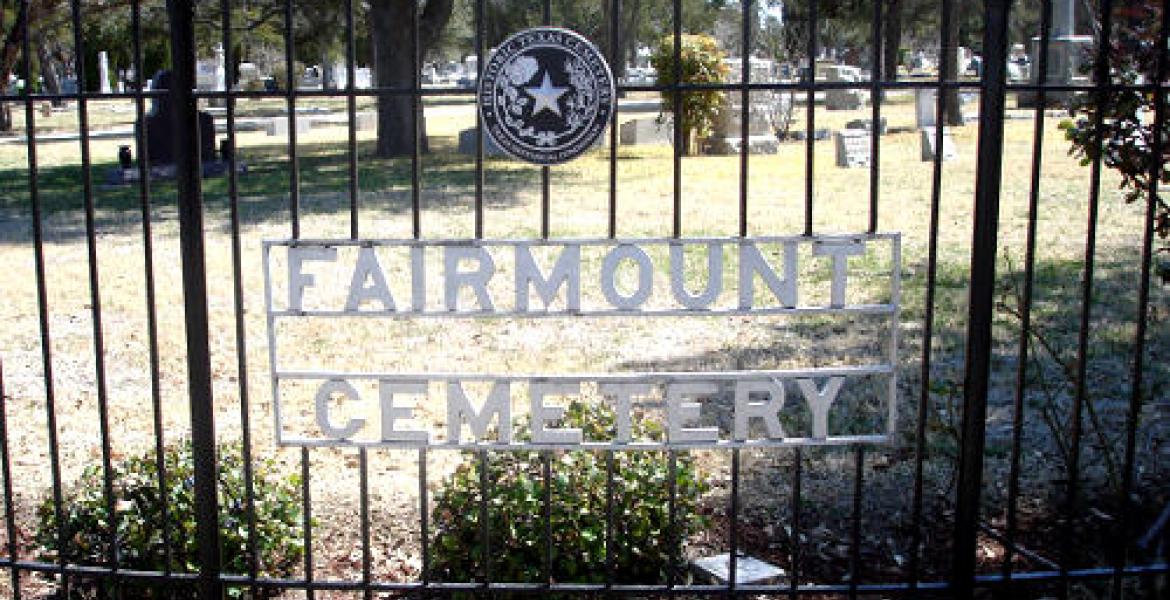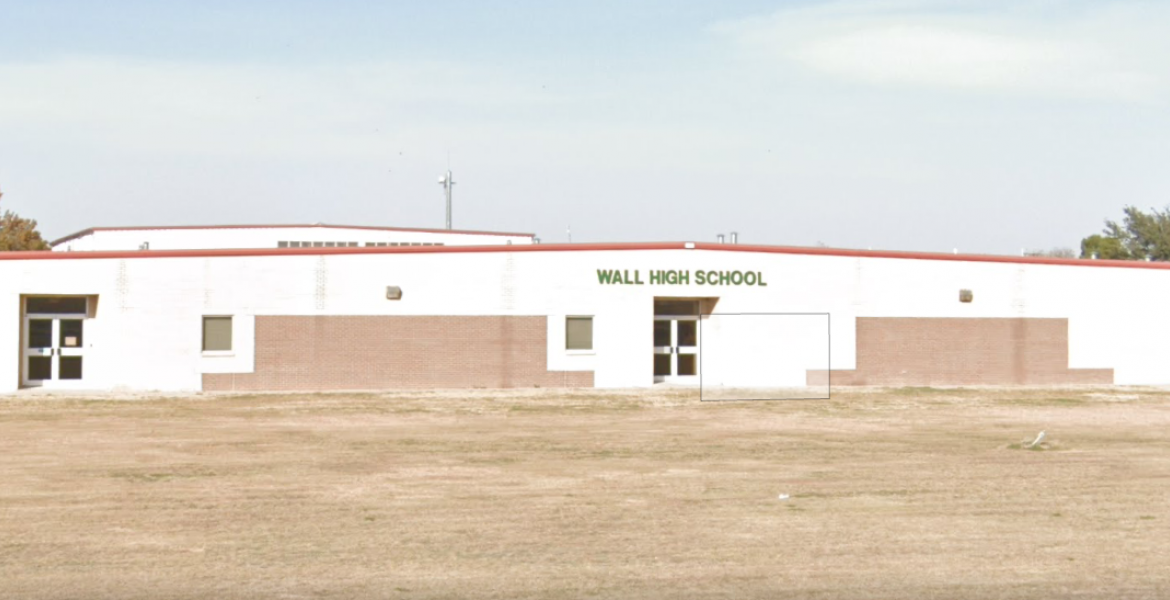The ability to talk with other agencies over the public safety radio network has been in question and clouded in confusion as to who the San Angelo police and firefighters are able to openly communicate with under the current radio communications system. That issue was reintroduced to the council agenda Tuesday.
“Right now we have the ability to talk to whoever we want when we want,” Bucky Hasty, the city's network administrator said. “We are going to keep all of the current abilities, and right now our preferred method of talking to these other agencies is through the patch system.”
Hasty says there are three components that will be added to improve communications. He mentioned throughout his presentation the P25 standard, an interop gateway which he says is deployed with a piece of hardware that will allow one to plug anything into the city's radio network. “Like a radio, a whole new system, a data connection to a remote system that’s going to let us communicate with any other agency that we want to talk to.”
Hasty said he has met with the county regarding this issue, and Tom Green County requested that the city get a VHF repeater. A repeater rebroadcasts a signal from a remote location so that the signal has a wider range. “It is dedicated way for anybody to talk to us, it will be a single repeater on one of our towers and it will be a one-stop shop for coming into our system, instead of the way we like to do it, which is to create a patch and become a customer or user on their system, this is going to allow them to become a customer on our system.”
The vendor that the city has been negotiating a contract with is Dailey and Wells Communications, Inc.. That company agreed to throw in this requested equipment at no additional charge. “We feel this will satisfy any concerns that those agencies have, that’s what they recommended, and that’s what we are going to do.”
After a few moments of thought in silence, Councilwoman Elizabeth Grindstaff asked, “Will someone be monitoring this repeater? Because if it’s not monitored it really serves no function, is that right?”
“In my opinion, yes it doesn’t serve a purpose if no one is going to monitor it,” Hasty answered.
Grindstaff directed her next question towards the mayor and city manager.
“How would we determine then how that works,” she asked. “That’s really more of a policy issue within the city.”
Apparently there are staffing issues that would prohibit an able body to monitor that channel.
“But if we are going to do this and we are going to have a better system, and we are upgrading, I want to cover the staffing too because this piece of equipment, if everybody agrees,” she said. “It’s kind of the missing piece in the prior proposal, it has to be monitored, or we don’t need to be talking about it.”
The issue was brought to council earlier on last month that information was not included in the presentation; leaving out what some felt was a vital piece of the puzzle.
“The whole purpose of why we have stayed with the patch system that we have had that seems to work for us and keeps everybody happy is because we don’t have staff to monitor a specific channel,” said Police Chief Tim Vasquez stepping up to the podium. “Even when we had intercity we didn’t have anybody monitoring it."
"So if somebody requested this channel they would call dispatch and say I need you to patch me through. When doing a patch, we would monitor that patch for the time it is being used; now we won’t be doing that," he said.
"We’ve got 13 dispatchers right now, we can’t hire dispatchers, we can’t keep dispatchers, and so we’ve got 12 vacancies and even then if we were fully staffed, I don’t know if I would be able to assign someone to monitor a channel that nobody is ever going to use unless there’s critical incident, which at that time we will be monitoring that channel. It’s been a political nightmare to say the least.”
“I know and we are all in it with you," Grindstaff said. "So I think it’s fair to say staffing is a concern of yours?”
“Absolutely,” Vasquez responded.
Councilwoman Charlotte Farmer was curious to know if the new system is going to operate with all 14 agencies that exist within the city and county that includes the FBI and Border Patrol.
“That’s what you had alluded to before in conversations, but I don’t think that it is,” she said asking for an explanation.
Hasty spoke up and said that the current system does, and that with the addition of the P25 and the interop gateway, it will facilitate that to happen a little bit easier.
“The current one that we have does with the patch system, and with adding this VHF repeater we are adding ways to communicate with these agencies as a permanent request,” Hasty answered.
Farmer asked exactly where on the north side of town the new tower will be erected.
“To the northeast of the coliseum in vacant lot that the city owns that’s utilized by the rodeo association, they park their trailers there,” he said. “We are going to kind of tuck it away in a corner, we have spoken to them and they are alright with it.”
The cost of the construction of the tower is not included in the $5.7 million dollar price tag that the radio upgrade project carries. There is however a dollar trade-in for the city’s existing system valued at $1.45 million dollars, which according to Hasty is included in the price. The estimated price for the cost of the tower construction is $200,000 on top of the existing $5.7 million it will take to replace what has been described as the city’s existing Titanic communications system.
“We were funded for this,’ Hasty said. “Funds were approved on January 7 for $6 million, and that was the number I thought I could get this done with and I’m nailing it, it turned out to be a good number.” In January council approved a small bond, or loan, and about half of it was dedicated to pay for the radio upgrade.
“So we are getting a $7.5 million dollar system for 6 million?” Marty Self said.
“Basically,” Hasty said. “But we are selling our old stuff too.” Selling it to the company that is providing the new system, which he already mentioned was included in the final price of $5.7 million like a credit towards the balance.
The extra $200,000 for the tower also includes in the price a utilities shed that houses a generator for back-up power and an air conditioner.
The vendor was in the chambers during the presentation, but never had a chance to speak.
Hasty said that the city has been working with that particular company since 2007, and that they are the number one pick of the police chief, fire chief and other radio users who are city officials.
“We have had virtually no radio issues since we’ve went to this system, before we had constant handheld failure,” said Fire Chief Brian Dunn.
Dunn did not agree with the repeater being put up to accommodate the county and other entities.
“That is not the best solution for that. That severely limits the range when you do that, the better system which is utilizing all three towers is using that patch,” he said. “If they choose to put that repeater on there, it will be a very limited area that that thing will function in. It was done to because they wanted a static channel, but that is not the best way to do it.”
Farmer wanted reassurance from Dunn and Vasquez that this is indeed the best system out there for local law enforcement as far as safety goes.
“If an officer needs help in the field, they can dispatch a call out wherever… is this the better system for that,” she questioned.
“It is, and has been since 2007,” Dunn replied. “We operate under an 800 MHz system, which for an urban environment such as police and [firefighters] operate in they penetrate the buildings better and get the signals inside buildings. The sheriff’s office and DPS office operate off of a 150 MHz system which has more range but it doesn’t get into the tighter areas. [The 150 Mhz frequency] is great for the patrol cars or for running down the highway, it’s not the best system for what we use in this urban environment.”
Rodney Fleming asked what the life expectancy on this system is compared to the one in place now.
“Basically the same as the other one,” said Hasty. “On mobiles and portables, around eight years, and on the infrastructure ten to twelve years.”
“So $750,000 a year for radios,” Fleming remarked to a council and chamber deep in thought.
Johnny Silvas made the motion to approve the agenda item as presented which Fleming seconded.
But, Grindstaff had a question for Chief Vasquez.
“You know we are all trying to do the best thing,” she said. "And we hear a lot of information from the other agencies and what little I understand, I can understand that 800 MHz versus 150 MHz, it’s really a different application if you will, what they are going to use most, what yall are going to use most. Can you explain to me, pick another city, Dallas, Austin, Houston, Fort Worth, any of them, can you tell us what frequency they would be working on versus what their police department in a more urban denser environment, how they would look?”
“Almost all municipalities are on 800 MHz, I mean everyone is using that,” Vasquez said. “ Again, it’s the sheriff’s department and DPS on the highway that are using 150 (Mhz), but most cities are using exactly what we are using. Abilene has a system like we are using.”
Grindstaff then asked, “How do they handle the interoperability issue between these two distinct frequencies?”
“The patch,” Vasquez said.
“Explain the patch,” Self spoke up.
Vasquez stepped to the side as Hasty was about to explain it for him when Grindstaff said, “No. We want you to do it.”
Her comment was met with laughter from the full council chambers.
“The patch basically means that we can communicate with any other type of agency with any other type of radio,” Vasquez began. “We can do that now with our current system there’s been a lot of misinformation talking about our current system that is not factual. We can do that now, we do it with a patch. Basically you contact dispatch you say I need to speak to DPS, have them meet us on this channel, we patch DPS. Still, the dispatcher has to call the other dispatcher at DPS to tell that unit to go to this channel and we communicate via the radio, and that’s pretty much it in a nutshell, that’s what a patch is.”
"I made a joke the other day, now what we are going to have [is] the police officer in the street is going to call the sheriff’s deputy on their cell phone and say meet me on this channel and talk, basically it’s just going to be an open channel all of the time,” Vasquez continued. "Instead of us doing the patch, which to me is a safety issue. I like the fact that all the officer or deputy has to go to this Texas Law 2 [a prescribed interop channel] and has to have the patch because the dispatcher knows that this officer is leaving their primary channel and going to a private channel that is not monitored.”
Councilmember Silvas brought up the concern of the time that may take in an emergency.
“If you are having to communicate twice for them to get on the same line, that takes time,” said Silvas.
Vasquez agreed and added that the patch is fast and that communication with the dispatcher is still necessary because no one monitors that channel. “It is just troublesome,” he said. “But this is our way to accommodate the other agencies or groups and if they want that channel. It’s not a problem for us.”
The council approved the purchase of the radio upgrade. Councilman Marty Self was the lone councilman voting against it.
Subscribe to the LIVE! Daily
Required






Comments
Listed By: ajax frsa
Seems like a lot of money for radios.
- Log in or register to post comments
PermalinkListed By: Jerry Decker
I still don't understand why we have to go outside the area to get this done. The city either doesn't have the right relationship with the local businesses and experts in the field or they are just ignoring them. I think one supports the other in this case. The city or it's police departments are not the experts. You use terms like Texas Law 2 that have not been used for more than 3 years. That channel no longer exists, and I bet you don't even have the experts in the city that could tell you what it changed to. It amazes me that we will spend 5.7 million dollars outside of the city to get something that is used by the city, and not supported by anyone in the city. I suspect that you will have to call a tech out of San Antonio to get things fixed. Like you've always done with you communications system needs since Western Communications closed it's doors (I was around when everything was locally maintained and used to work on the cities radios back in the 80's), you will never build relationships within the city to make the city more prosperous. Why?
- Log in or register to post comments
PermalinkListed By: Guy Fawkes
Where is the city coming up with these millions of dollars to spend all of a sudden? Is it tax revenue, federal grants, or what? Two: why can't the city commissioners build a dog park on city park land with some of this money, instead of looking at giving themselves a pay raise?
- Log in or register to post comments
PermalinkListed By: Joe Hyde
A bond issue was approved in January for this.
- Log in or register to post comments
PermalinkPost a comment to this article here: